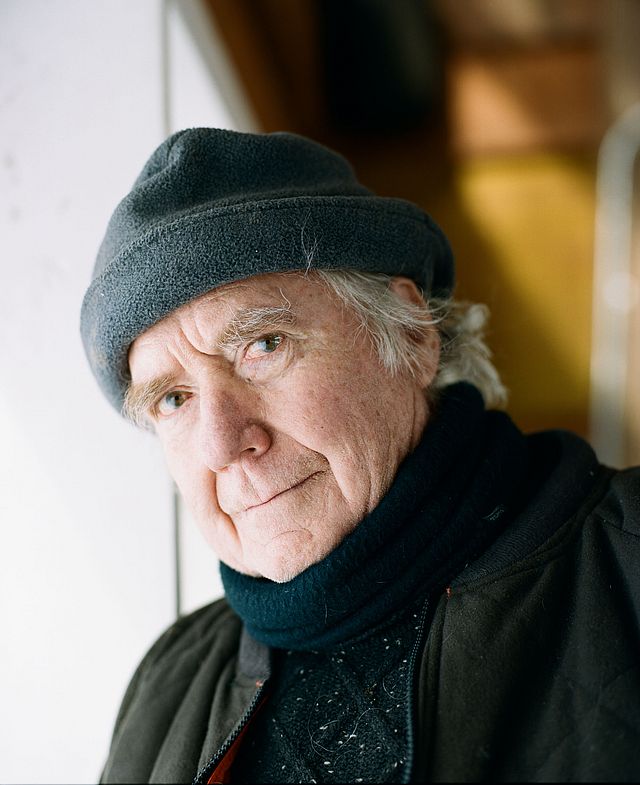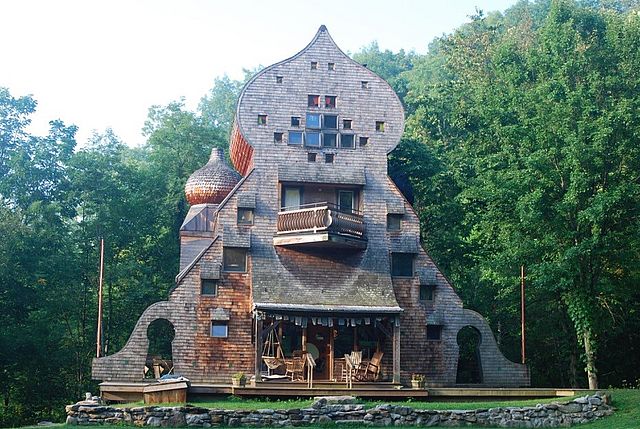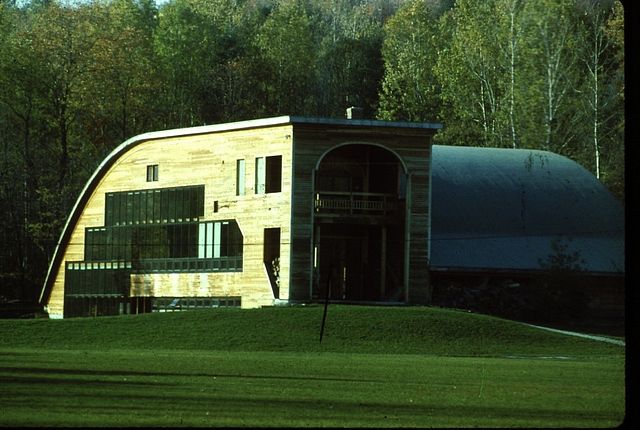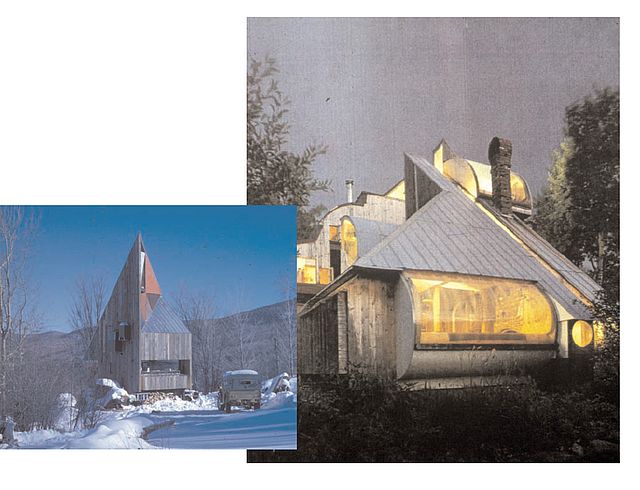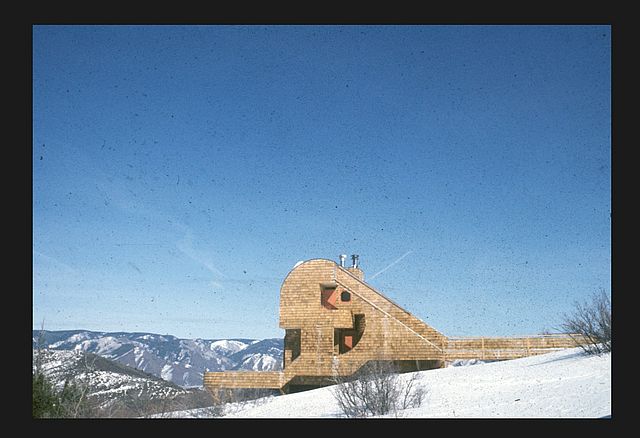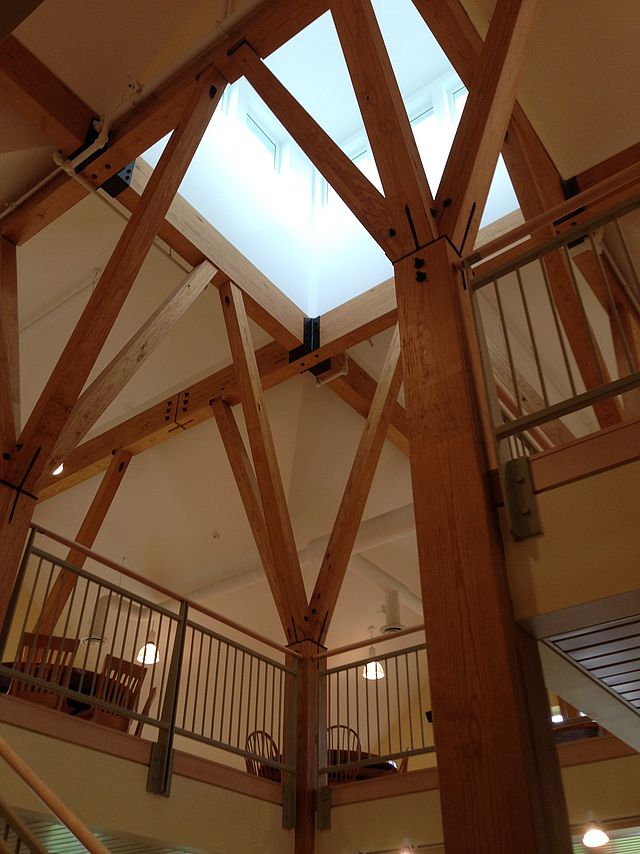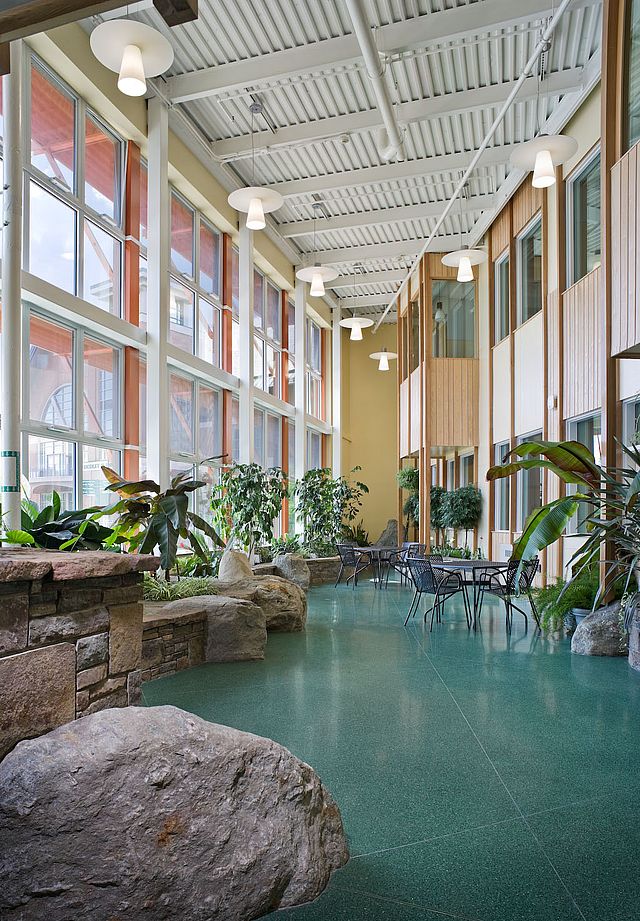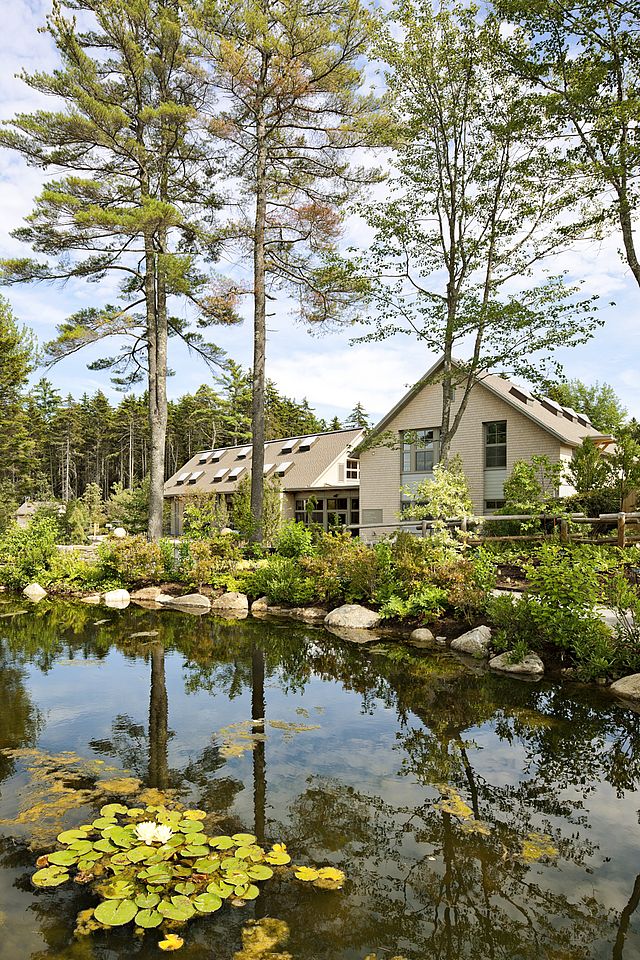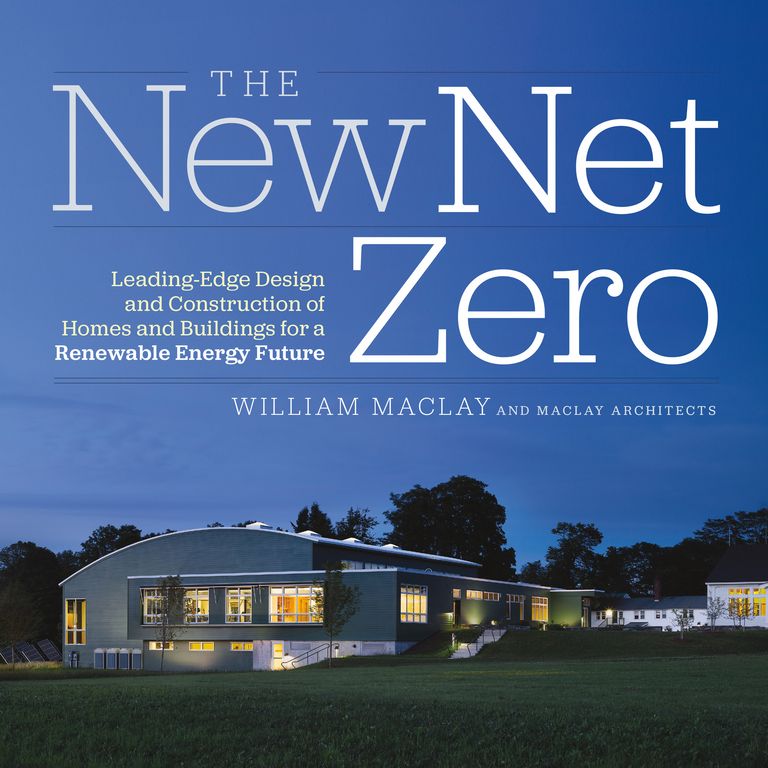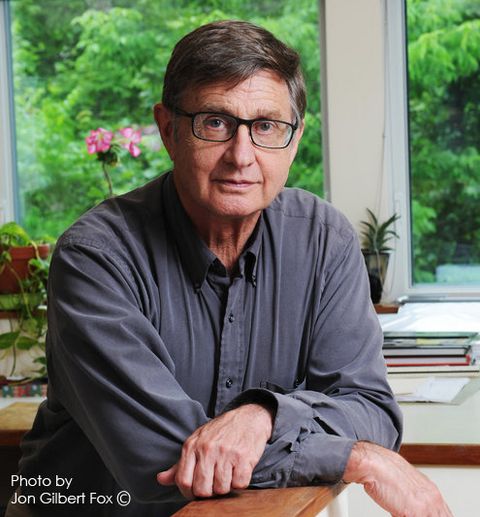Two Vermont Architect Pioneers Receive AIA Fellow Honors
By Andrew Schlatter, AIA and Carol Miklos
This year, at the AIA Conference on Architecture 2017 in Orlando, the organization’s leadership announced that two Vermont architects—David Sellers and William Maclay—had been among those elevated to its prestigious College of Fellows, an honor awarded to members who have made significant contributions to the profession of architecture and society. Such recognition is rare: Fellowship status is conferred upon only 3% of the AIA’s more than 90,000 members. To date, only four other Vermont architects have achieved the status of FAIA: Frank Guillot of Guillot-Vivian-Viehmann Architects, Robert Burley (emeritus), William Truex (emeritus), and William Wiese (emeritus). With the addition of Sellers and Maclay, Vermont now (with Burley), has half its AIA Fellows concentrated in a considerably small geographic region: the Mad River Valley.
What is it about the Mad River Valley that produced such an architecturally rich environment? The valley has been identified, at least anecdotally, as home to more architects per capita than anywhere in the United States. To find the answer, one might have to go back to the late 1960s and early 1970s, to the work taking place in Warren at Prickly Mountain, site of the renowned experimental design/build movement co-founded by Sellers. It was there that Sellers and Maclay began to demonstrate a strong commitment to innovation and environmental responsibility that has remained constant throughout their practice of design. While there, both also came to be committed to the idea of the architect as master builder, one who is responsible not only to the artistic, contextual, and purposeful aspects of his designs, but also to the material and craft with which these are executed.
Despite operating from relatively small practices in a rural area, both Sellers and Maclay have developed a body of work that has inspired and influenced multiple generations of designers, with impacts reaching far beyond Vermont’s borders. Through local, national and international built projects and teaching engagements, both men have been developing, and sharing their insights and expertise for decades. Locally, both Sellers and Maclay have been proponents of design/build education through their involvement with Yestermorrow Design/Build School in Warren. Maclay served on the board of directors for many years; Sellers continues to serve on the school’s advisory board.
In a sponsorship letter for David Sellers’ application to the AIA College of Fellows, Gunnar Hubbard, FAIA, of Thornton Tomasetti, New York, New York, described Sellers as “a pioneer who has merged sustainability, materiality, humanity and artistry into a philosophy unmoored from architectural tradition and critical to our planet’s future.” Sellers, he went on to say, is “the father of the design/build movement,” beginning with his work at Prickly Mountain and promulgated through his directorship of the Goddard College Design and Construction Program, role as studio head at Yale University’s Graduate School of Architecture, and position as studio head at MIT’s Graduate School of Architecture.
“Dave practices what he preaches,” stated Hubbard, “sometimes building without blueprints, as seen in the ingenious Pitcher Inn [in Warren], the houses on Prickly Mountain, and the buildings at Dr. Patch Adams’ Gesundheit! Institute—a 425-acre community eco-village in West Virginia.
Sellers’ architectural and planning work, spanning 50 years and multiple continents, ranges from a 200-year planning vision for Burlington to medical clinics for the impoverished in ecologically threatened areas of El Salvador, Peru, Haiti, Mexico, Senegal and the Amazon. He has earned six AIAVT design excellence awards, for projects including Smith Lodge in Warren and Atkins Lodge in Killington.
Sellers’ accomplishments, however, extend well beyond architectural design and planning and into the realm of product invention. He has developed designs for a human-powered pedal train for rural commuting, a “Butterfly House” featuring mirrored sides that make it invisible in the woods and that unfolds for camp or vacation use, and an underground house with a grass roof that sits flush to the ground and pops up on hydraulic cylinders.
Over the last several decades, Sellers’ creativity has helped spawn several successful businesses, including: Vermont Iron Stove Company, a manufacturer of high-efficiency wood stoves; Four Elements Corporation, where with John Todd he designed the earliest commercially-viable, solar-aquatic, natural-sewage-treatment system; Northern Power Systems, a firm specializing in renewable power systems for harsh climates; and Mad River Rocket Company, which produces wilderness sleds. Most recently, Sellers founded the Madsonian Museum of Industrial Design. Located in Waitsfield, the museum celebrates great design in everything from cars to toys to doorknobs.
Bill Maclay’s innovation and collaboration efforts have been equal to Sellers’—they have merely gone in a different direction. He has been experimenting with architectural solutions to issues of energy efficiency and social program since his earliest built work. When he arrived at Prickly Mountain in 1971, with two classmates from the University of Pennsylvania, Jim Sanford and Dick Travers, it was to design and build Dimetrodon—a solar, wind, and wood-powered community apartment building. The structure was built as a framework into which individual tenants collaboratively designed and constructed their individual units. Since that first design/build project, Maclay has focused his 45+-year career on developing replicable, cost-effective, and thoroughly developed concepts for energy-efficient design and construction.
“Long before anyone was talking about sustainability, Bill was designing buildings that pushed the edges of technology and performance,” says Maclay’s Fellowship Sponsor Scott Simons, FAIA, of Scott Simons Architects, Portland, Maine. “He was experimenting with high performance materials and alternative energy sources long before it became fashionable.”
In addition to his contributions at Yestermorrow Design/Build School, Maclay has taught courses, lectured, and served on design juries at institutions including the University of Pennsylvania, the University of Vermont, and SciArc. He has also served as an advocate for design and environmental responsibility through past roles in regional non-profit groups. As a past president of AIAVT, he worked to urge state legislators to pass a Statute of Repose for design professionals to more fairly limit their liability; as chair of the Public Policy Committee for Vermont Businesses for Social Responsibility, he lobbied to create sustainable jobs in the public sector as well as to bolster legislation supporting Vermont’s high environmental quality.
Maclay’s extensive experience in sustainable building practices informs his book, The New Net Zero (published by Chelsea Green, 2014). The book, according to Maclay, was originally conceived as a self-published collection of case studies and lessons learned from several of his net-zero building projects.
“I got involved in it as any architect might, saying, ‘we’ve done some net zero buildings, so why don’t we share some of the knowledge,’” he explained. The project grew from there, he added, providing a framework “to pull together topics I’d been thinking about for my whole career.” Now in its second printing, the book, says Simons, “has become one of the most respected reference manuals for anyone working on net-zero energy buildings in the U.S.”
With its extensive documentation and reference requirements, the AIA Fellowship application process itself can be daunting, to the point that Maclay decided to put it off when he was initially encouraged to apply about 15 years ago, following his term as president of AIAVT. However, once he became involved with the application, Maclay discovered that the process had some unanticipated benefits. “It provides an opportunity to put your career together in an organized way, to reflect on what you’ve done over time and…reconnect with colleagues over the life of your career that you might have fallen out of touch with,” he said. This opportunity to reflect on your career, says Maclay, allows you to look forward as well: “You can say, ‘I’ve done that, so now what do I do next?’ ”
The elevation of Sellers and Maclay to the AIA College of Fellows is fitting recognition of the contributions these two have made to the field of architecture. At the same time, for Vermont architects, this honor means something more: it is a moment to recognize the unique and lasting impact of the homegrown design-build movement that was initiated with Prickly Mountain more than 50 years ago. The spirit of collaborative experimentation that led designers like Sellers and Maclay to leave the cities and institutions where architecture was traditionally taught and practiced, and come to rural Vermont to build what they designed, continues to influence Vermont’s design culture today. In Sellers and Maclay, we have designers whose careers exemplify the ways in which small design practices in rural areas can push the larger profession forward.

